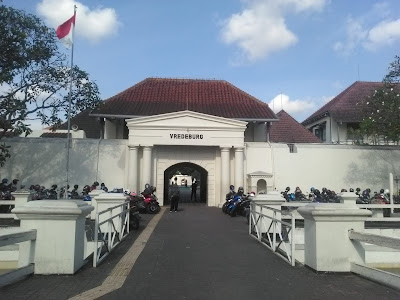Research problems & hypotheses
 |
| www.dreamstime.com |
Activity 1:
1. What is meant by a “research problem”?
Answer: Research problem is the question you want to answer through research.
2. Where do research problems come from?
Answer: research problem comes from the gaps between expectation and reality.
3. Mention four characteristics of a research problem, and explain each!
Answer: four characteristics of a research problem:
a) Relationship Between Variables: It should ask about a relationship between two or more variables
b) The problem is Stated in Question Form: It should be stated clearly and unambiguously, usually in question form.
c) Empirical Testability: It should be testable by empirical methods; that is, it should be possible to collect data to answer the question asked.
d) Avoidance of Moral or Ethical Judgment: It should not represent a moral or a ethical position.
4. Specify some criteria to be applied in choosing a research problem!
Answer:
a) Workability
b) Critical mass
c) Interest
d) Theoretical value
e) Practical value
5. Give five examples of research problem in second learning language!
Answer:
a) What makes the learners of second language learning confused in differentiating between adjectives and noun?
b) How students difficult to understand the long task than shorter task?
c) Are there any differences between students who do extensive listening and who do not?
d) What makes students difficult to reveal words what they are thinking although they know
how to reveal it?
e) Is there any significant listening skill improvement between students who know many
vocabularies and who do not?
Activity 2:
1. What is hypothesis?
Answer: A hypothesis is suggested answer to the problem and also can be defined as an expecatation about events based on generalizations of the assuned relationship between variables
2. Explain the difference between observation specific hypothesis and general hypothesis!
Answer:
· A spesific hypothesis is the specific/narrower expectation of researcher setting forth anticipated relationship between two variables.
· A general hypothesis is the generalization and must be tested by making observation.
3. Where do hypothesis come from?
Answer:
Hypothesis comes from two processes:
· Induction begins with data and observations (empirical events) and proceeds toward hypothesis and theories.
· Deduction begins with theories and general hypotheses proceeds toward specific hypotheses (or anticipated observation).
4. What are alternative hypothesis, and how do you construct them?
· Alternative hypothesis, the alternative hypothesis, denoted by H1 or Ha, is the hypothesis that sample observations are influenced by some non-random cause.
· How to construct alternatives hypothesis:
Before actually conducting a hypothesis test, you have to put two possible hypotheses on the table — the null hypothesis is one of them. But, if the null hypothesis is rejected (that is, there was sufficient evidence against it), what’s your alternative going to be? Actually, three possibilities exist for the second (or alternative) hypothesis, denoted Ha. Here they are, along with their shorthand notations in the context of the pie example:
Ø The population parameter is not equal to the claimed value
Ø The population parameter is greater than the claimed value
Ø The population parameter is less than the claimed value
Which alternative hypothesis you choose in setting up your hypothesis test depends on what you’re interested in concluding, should you have enough evidence to refute the null hypothesis (the claim). The alternative hypothesis should be decided upon before collecting or looking at any data, so as not to influence the results.
5. What is a null hypothesis, and what is the advantage of using one in research?
Answer:
· A null hypothesis is a hypothesis that says there is no statistical significance between the two variables in the hypothesis.
· The advantages of using null hypothesis:
§ They provide a logical framework for hypothesis testing in biology
§ They provide an accepted convention for statistical analysis
§ The techniques are tried and tested
§ The alternative hypothesis can be rather vague
§ They reflect the same underlying statistical reasoning as confidence intervals
References:
1. Brown, J.D. 1988. Understanding Research in Language Learning. Cambridge: CUP.
2. Nunan, D. 1989. Research Methods in Language Learning. Cambridge: CUP.
3. Saleh, M. 2001. Pengantar Praktik Penelitian Pengajaran Bahasa. Semarang: IKIP Semarang Press.
4. Tuckman, B.W. 1978. Conducting Educational Research. London: Harcourt Brace Jacobovitz.







No comments:
Post a Comment
Komentarlah dengan bijak